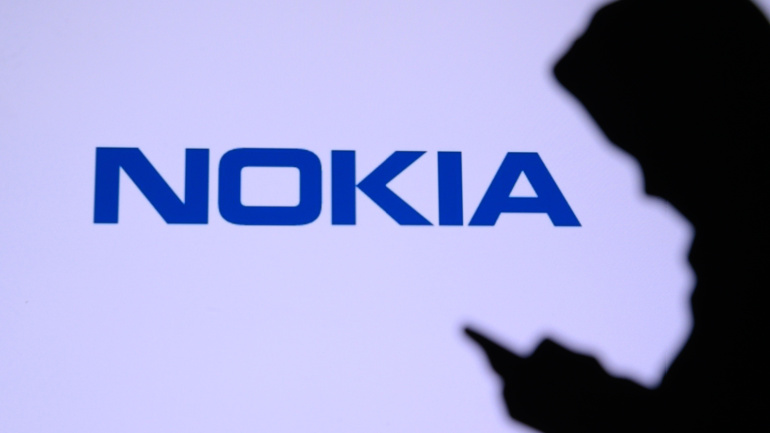Networking the future with simple text or voice commands? That’s what Nokia’s Bell Labs envisions with their new AI-centric technology – Natural-Language Networking. This breakthrough could revolutionize how network resources are managed by learning user needs over time, resulting in a self-regulating and adaptive system. As a pivotal part of the ambitious UNEXT programme, this technology simplifies network management, aiming for a seamless yet independent functioning of all network elements. An interactive OS that learns and anticipates need – the future of telecoms is unfolding right now.
Telecom News | Week #44: T Challenge, End of Vodafone Spain, Nokia’s Technology Strategy 2030, Samsung and O2 testing vRAN.
Nokia’s 25G PON solutions are boosting Google Fiber’s bold venture into establishing a 20-Gbps service, though the full potential of such capacity remains untapped. However, Google Fiber, focusing on the future, views this as a crucial step towards achieving 100-Gbps services and beyond. Yet, does the necessity of such impressive speeds linger in doubt, or are these advancements setting a thrilling precedent in the field of telecommunications?
In a robust move, Nokia is set to enhance 5G Fixed Wireless Access (FWA) with the unveiling of FastMile, two innovative solutions aimed at boosting indoor and outdoor coverage. This stride could revolutionize the industry, especially when considering wall attenuation effects on network capacity. FastMile’s outdoor solution cleverly sidesteps signal loss due to wall materials, while an intuitive mobile app assists users in determining the best placement for their receivers—shaping a route towards an optimal user experience in telecommunications.
Navigating an increasingly challenging market, Nokia is bracing for reductions in staff numbers bolstered by a severe 15% year-on-year sales decline. Despite facing these obstacles, including a slowed pace of 5G deployment in India and underperforming Network Infrastructure division, Nokia’s Cloud and Network Services remain resilient. Amidst downsizing, CEO Pekka Lundmark forecasts a more optimistic fourth quarter, exemplifying the struggle between current hardships and future potential.
Telecommunication giant BT, in collaboration with Nokia and MediaTek, is exploring the potential of 5G Reduced Capability (RedCap) for Internet of Things (IoT) applications. Recently conducted trials at BT’s research centre aimed at uncovering new use-cases for this technology, which, simplified and less complex than 4G, promises a more efficient IoT ecosystem. As suggested by BT’s Chief Networks Officer, Greg McCall, the RedCap technology could “unlock a new wave of innovation” within the 5G landscape.
Nokia takes a significant leap in telecom landscape with a unique Cloud RAN trial, persistently striving to achieve parity between Cloud RAN and purpose-built RAN. This strategic move, involving Elisa, explores In-Line acceleration potential, positioning Nokia in a subtle competition with Ericsson’s ‘Look-Aside’ approach. The latter’s reticence adds intrigue to this telecommunication rivalry. However, will Nokia’s In-Line strategy prove to be the more efficient route?
Vodafone is expanding its devotion to Open RAN technology, joining forces with Nokia in a progressive venture in Italy. The initiative aligns with Vodafone’s Open RAN directive, largely centered in the UK, and extends influence to the Italian telecom landscape. With this first commercial 5G Open RAN pilot in Italy, they aim to prove Nokia’s Open RAN solution matches the functionality and quality of traditional RAN. With an eye on promoting automated, adaptable networks for the ever-growing demand of responsive 5G services, such innovation bolsters the EU’s digital sovereignty and global competitiveness.
As Nokia unveils its latest collaboration with Brazil’s Jacto for a new private network, we see industry lines blur, with telecom revolutionizing agriculture. As expected, automation will dominate, revolutionizing production lines in Jacto’s massive smart factory. A key player in this transformation – 4.9G/LTE and 5G connectivity, allowing various aspects of manual labor to be automated. A ground-breaking stroke, this could signal the advent of a new era in Latin America’s agriculture-tech crossover. Moreover, Nokia’s innovative compact DAC private wireless offering reveals the company’s flexibility and adaptability.
HMD Global sets a new bar in smartphone manufacturing with the Nokia XR21, claiming ‘military-grade durability’ and localized data storage for improved security. Remarkably, this sturdy device boasts a chassis made from 100% recycled aluminium, affirming the company’s commitment to sustainability. As an added boon, it has moved its manufacturing to Europe, enhancing the product quality control. This move hints at the potential appeal of a ‘Made in Europe’ smartphone in an overwhelmingly Asian-dominated market.













